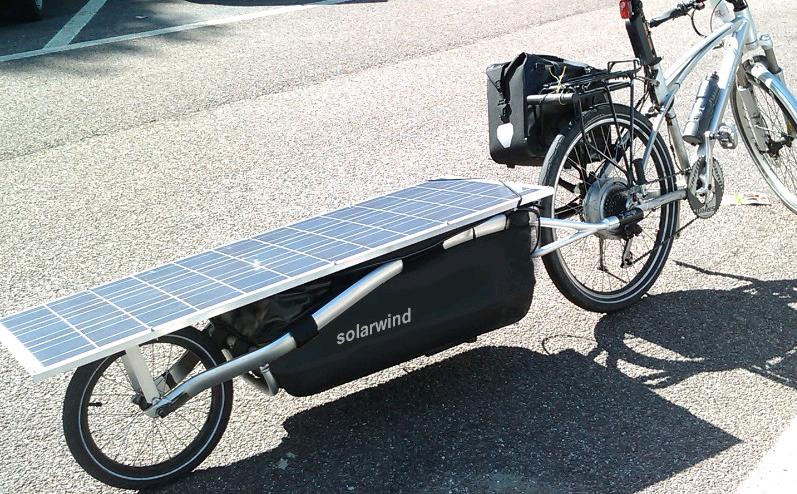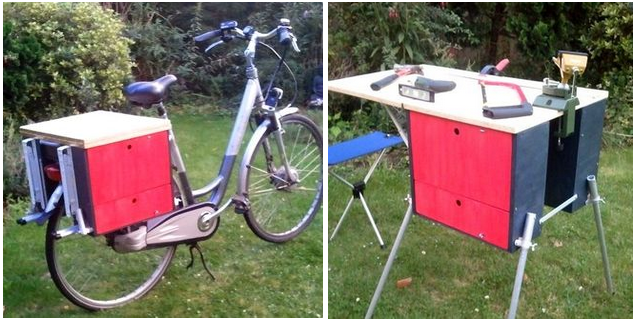“The electric bicycle has become a very long way in recent years. However, the lack of luggage space and limited range of the battery makes the electric bike less suited to long distances. Solarwind, designed by architect Raf Van Hulle, offers a solution.
The trailer provides extra luggage space and is fitted with a solar panel to keep the electric bicycle’s battery charged.”








